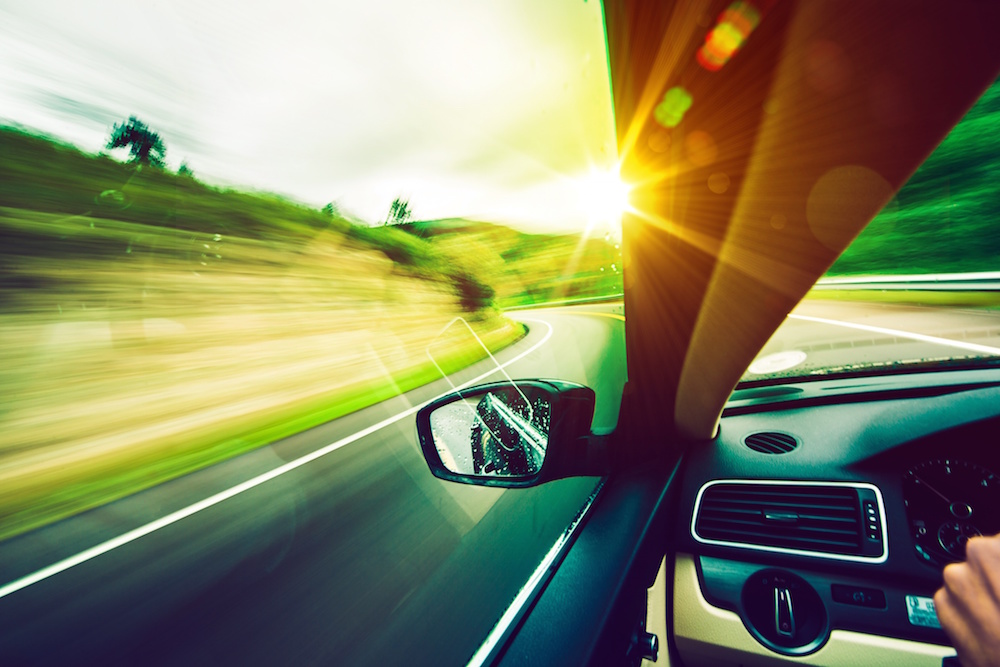Maintaining focused awareness on the road these days is both increasingly important and increasingly difficult. More cars than ever are on the road, more and more machines, devices, and advertisements are vying for our attention and as cities are building their transportation infrastructure to accommodate future projections of increased traffic, the road hazards and slow downs are altogether very real. So what can you do? The safety of your children, your friends, your passengers and yourself are all very important – not to mention your time. And you can only control so much of your driving experience, having little ability to change the actions of other drivers. Fortunately, while the habits of more defensive driving may require some time to adopt, with a little practice you will be well on your way to the peace of mind needed for a less anxious commute during weekday travels, and for happier times on the weekends as you travel farther with your loved ones from the roost.
Very simply put, the most important factors affecting your safety on the road are not complicated – it all comes down to distance and speed. It’s basic but noteworthy: With distance between you and the car in front of you, you are safe – without it, you’re in trouble. So first of all, keep a very healthy distance between you and the cars in front of you. The effective nature of this very basic, rather sensible habit may be initially overlooked, but an extra second or two of response time can mean the difference between an inconvenient spilt cup of joe when you have to brake suddenly, and a personal injury – or worse, in the event of an otherwise avoidable accident. The ramifications of this very simple first step are very real, and you will benefit by the practice of respecting the speed with which a driving gap can suddenly close.
Second, keep your speed within a couple miles per hour of the traffic you are in. The math itself is the most convincing reason to adopt this practice – by adding 10 more miles per hour to your speed, you only save about 5 minutes traveling between Tacoma and Seattle, but you risk much. Any time you are pulled over, you can expect a traffic ticket that takes you at least twenty minutes to write, and usually more than half an hour. On top of time lost and the cost of the ticket your insurance rate will increase and that increase can last for years. Keeping your speed to within a couple of miles an hour of the relative traffic is an amazingly effective way to get to your destination in one piece, on time, and with an easier commute. This means less stress, better peace, a clearer mind and a more enjoyable experience while driving.
As a matter of practical reality, the roads all over Washington State are full of twists and turns – even the freeways have curves in place of straightaways. This was a necessity born of the character of the natural terrain. And the ultimate effect is that you simply cannot see the traffic very far in front of you. In real terms, the traffic just around the bend can be at a dead stop, with no indication in front of you that traffic has even slowed.
Third, keep your use of media devices and communications to a minimal. Few things require more mental energy than communication with others, paying attention to digital media or fumbling through devices for entertainment. The dangers are very real: In 2011, 3,360 people were killed in crashes involving distracted drivers. And even hands-free devices cause safety risks when you’re distracted by conversation. Using a smart phone reduces the amount of brain activity associated with driving by 37%, according to a study by Carnegie Mellon. So while you’re on the road, keep your attention and focus where it belongs: On the road in front of you.
One noteworthy road hazard is not commonly known to many, and involves rain after a season of dryness: The oils lying dormant on the roads rise to the surface, creating slick conditions for driving, and our weather patterns are such that this scenario happens very often throughout the year. When it first begins to rain, give more attention to your distance and your speed.
Otherwise, be mindful of the obvious things that are easy to forget: Remember pedestrians and bicyclists are also on the roads, slow down in neighborhoods, always buckle your seatbelt and use common sense when entering areas with construction, schools, industrial equipment of any kind and if children are present anywhere. Slowing your speed significantly will bring peace of mind to you and others as well. Happy (safe) travels!
Use the quick links below to view details on our popular services:

